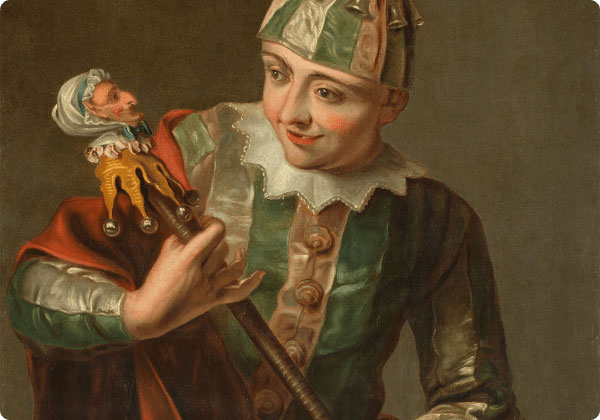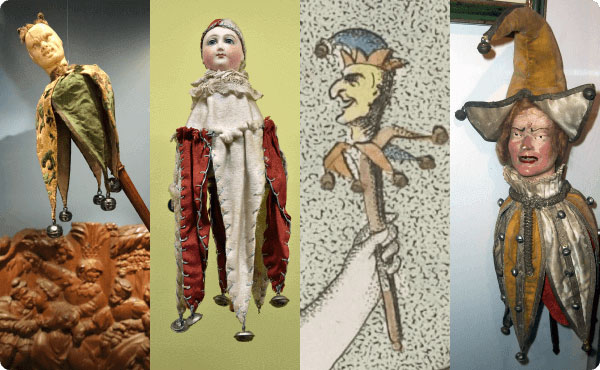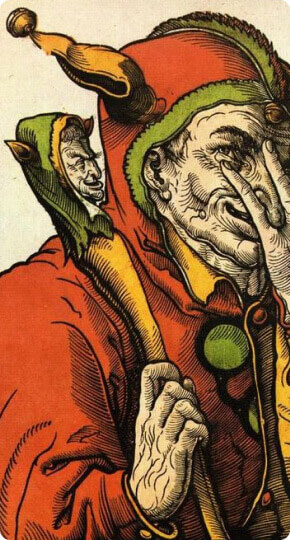The Jester’s Sceptre
The jester was adept at many skills from singing, tumbling, dancing, juggling, and of course mockery. But alas, what is an entertainer without his props? The jester’s sceptre is one of the most iconic props of the jester and is immortalised in history as the fool’s tool of the trade.
Traditionally a sceptre is a staff that monarchs carried during ceremonies and used as a symbol of power and authority. The word sceptre comes from the Greek verb that translates to lean on something or someone. Being both symbolic as a people rely and lean on their ruler and in the practical sense as it was a large ornate staff.
The jester appropriated the sceptre and used it for their own comedic routines, making a mockery of the symbolism behind the prop. The jester’s sceptre was not as richly decorated as a ruler’s sceptre and instead would be decorated in bright colours and have a carved head of an animal or character on top.
Other names for a jester’s sceptre include bauble, jester’s stick, jester’s staff, and jester’s marotte. In French, the word marotte means fad or craze.

Jeune garçon en costume de folie | Philippe Mercier (1935-40)

Examples of Marrottes from Wikipedia
Through the history of the jester, they are often seen carrying a fool’s sceptre topped with grotesque faces. The court jester, in particular, was known for this distinctive accessory. Typically, the marotte will present a grinning face and is decked with bells, making it ideal to punctuate their jokes, or announce their presence when entering a room.
Sceptres would typically be carved from wood and painted, using various materials from feathers, ribbons, or cloth to decorate them. The faces carved into the sceptre sometimes resembled the jester themself, a monarch or figure of the court, or they were simply used as a comedic prop.
Famous examples of sceptres
The sceptre or marotte has become synonymous with the jester’s image. You can even see the Joker in a deck of cards holding a sceptre of his own.
Even in art you can see examples of jesters with their favoured props. The painting “The Court Jester” by John Watson Nicol (1895) shows a jester decorating his sceptre in this scene. Another painting titled “Keying Up – The Court Jester” by William Merritt Chase (1875) shows a jester holding a marotte with a face similar to his own in his arms.
In theatre the opera Rigoletto by Giuseppe Verdi is the story of a jester at a Duke’s court who uses his wit to make a mockery of the other characters, and the jester is often carrying a sceptre with the dual faces of comedy and tragedy.
In the Italian Commedia dell’arte the character known as the Harlequin or Arlecchino plays the role of a light-hearted servant and romantic hero. This role incorporates the use of bright colours, a mask and a sceptre or magic wand.
Other famous jesters in theatre such as Shakespearean fools are often seen carrying sceptres in various interpretations, such as King Lear.
Jesters wielded sceptres throughout history, much to the vexation or amusement of the kings and queens of their day. Learn more about jesters around the world.

Schalksnarr | Heinrich Vogtherr (1540)

